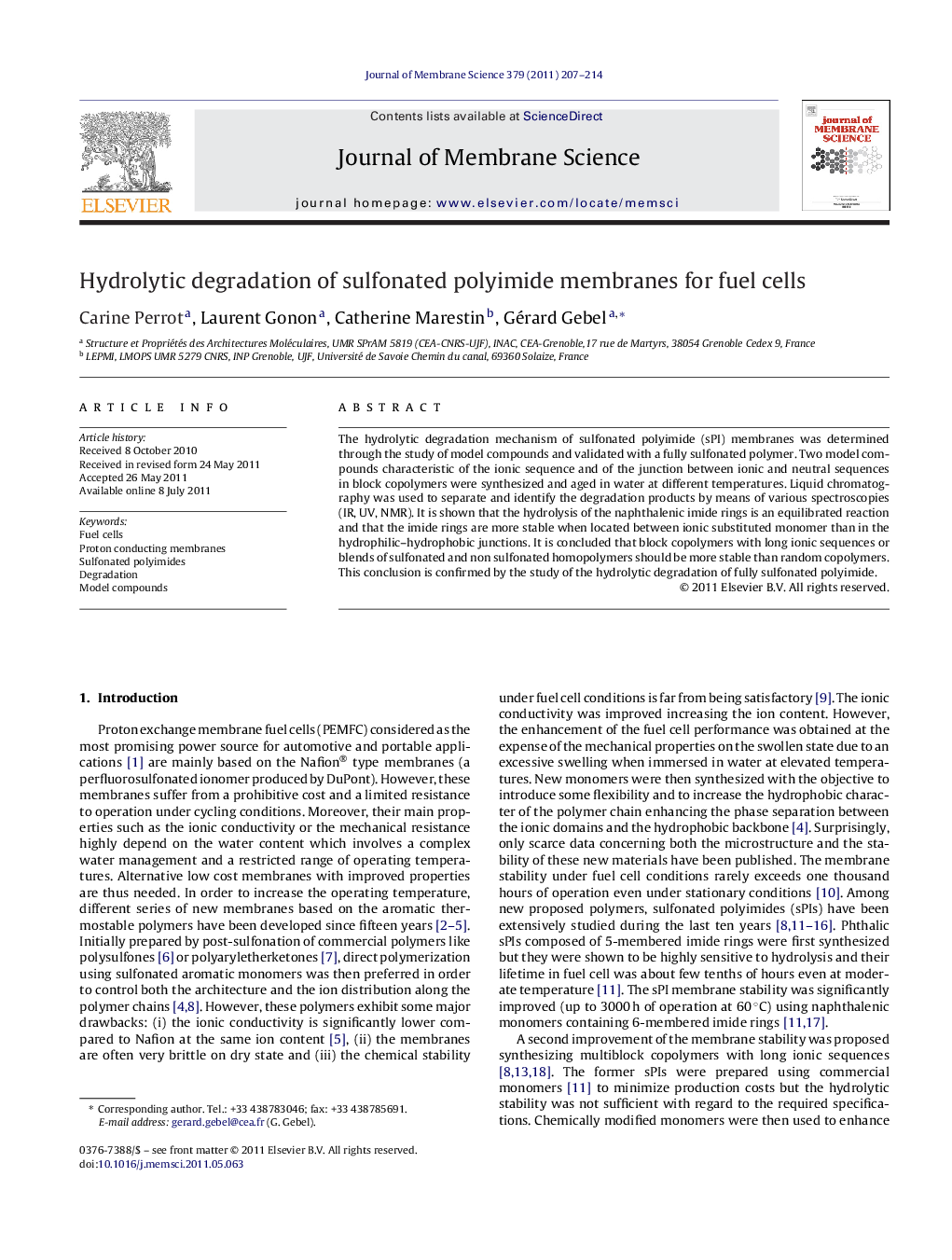| Article ID | Journal | Published Year | Pages | File Type |
|---|---|---|---|---|
| 635540 | Journal of Membrane Science | 2011 | 8 Pages |
The hydrolytic degradation mechanism of sulfonated polyimide (sPI) membranes was determined through the study of model compounds and validated with a fully sulfonated polymer. Two model compounds characteristic of the ionic sequence and of the junction between ionic and neutral sequences in block copolymers were synthesized and aged in water at different temperatures. Liquid chromatography was used to separate and identify the degradation products by means of various spectroscopies (IR, UV, NMR). It is shown that the hydrolysis of the naphthalenic imide rings is an equilibrated reaction and that the imide rings are more stable when located between ionic substituted monomer than in the hydrophilic–hydrophobic junctions. It is concluded that block copolymers with long ionic sequences or blends of sulfonated and non sulfonated homopolymers should be more stable than random copolymers. This conclusion is confirmed by the study of the hydrolytic degradation of fully sulfonated polyimide.
Graphical abstractFigure optionsDownload full-size imageDownload high-quality image (99 K)Download as PowerPoint slideHighlights► Hydrolytic study of sulfonated polyimide membranes via model compounds. ► Hydrolytic degradation is mainly due to imide ring opening. ► Identified degradation products is an evidence of an equilibrated reaction. ► Quantitative 13C NMR data confirm formation of anhydrides as degradation products. ► Good correlation between model compounds and polymer degradation.
